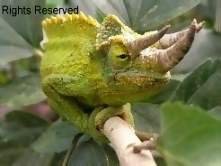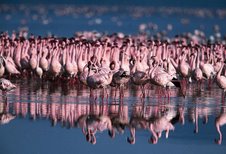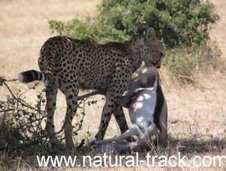(A tale from African safari experiences)
Elephants are the most interesting animals in the world in addition to them being the largest animal living on dry land today. Having grown up in Kenya and enjoying Kenya safaris, I have had enormous scenarios and amazing encounters with African elephants, but my desire for more and more encounters is voracious. Today I will tell you untold stories and incredible encounters with elephants in Africa and off course some implausible facts. Join me…..
In one African experience, we were sited around a campfire in one of my safaris in Kenya that worked out so well. The night was characterized by clear skies, lions roar and hyenas human like laughter. The night jars whistled and bats flapped their wings as they hovered in the air. The story of Ahmed - the Kenya's most famous Elephant was being aired by our guide as everyone nodded in awe. We all wished it didn't end, but our joy was we would visit Marsabit national reserve in a few days time.
The day we rose up in Marsabit national reserve was awesome. The reserve is characterized by forested mountains which rise like an oasis in what otherwise would be a desert boondocks. Although the reserve is home to some of the largest elephants in Kenya, it is only Ahmed who enjoyed twenty four hour surveillance from presidential order. Ahmed was preserved and now stands a national monument, displayed at the Nairobi national museums in Kenya. He died at the age of fifty five.
One of the other spectacles in Marsabit national reserve is the crater lakes. Despite being surrounded by a vast abscond wilderness; the beauty of these lakes is far ahead moving imagination. The reserve has three crater lakes which provide habitat to a variety of birdlife. One of the three – called lake paradise is the most scenic and famous from the early films and writings of Martin Johnson and Vivien de Wattville.
Of even amusing stature is the Tsavo national park. This magnificent wildlife thrilled paradise lies on the southern east Kenya, just a few hours drive to the famous, sun-baked white-sanded beaches of the Kenyan coast. Tsavo was crowned home to man eaters' mane less lion in early 1900 to 1920. The lions killed countless Asians, Africans and Europeans who by then worked on the construction of Kenya Uganda railway.
Tsavo is also known to have been theatre of the greatest elephant slaughter in Kenya, all in the name of poaching for ivory. As a result, the elephants developed a wretched tendency towards human being. When they saw vehicles or hear the sounds of running engines, they would run away and hide in he think bushes. That was in the 60s and 70s. However, this has now stopped and the new generation is more calm and human friendly. If you get to Tsavo you will be amazed to see 'brown' elephants. This is as a result of brown mad bathes they take from the pools of water in park.
As I conclude let me share with you what I consider to be the most amazing facts about the elephants, an animal that ranks high on any visitors Kenyan safari itinerary; Elephants stomp when they walk and sleep standing up while baby elephants sometimes lie down to sleep. Elephants bathe. Sometimes they spray dirt on themselves or bathe in mud to get the parasites off. Elephants weigh about 10,000 pounds. It would take 250 students to add up to 10,000 pounds. They cool off by fanning their ears. This cools the blood in their ears and that blood goes to the rest of their body and cools off the elephant.
Only grown up ladies and their babies live in the herds, the bull elephants leave the herd when they are 12 years old. They fight with their tusks and they eat grass and bark of trees. The longest recorded fight between two elephants was recorded at 10 hours and 56 minutes.
During the wet season they eat things low to the ground while during the dry season they use their trunk to gather food from trees and bushes. They suck up water into their trunks and shoot it into their mouths. Elephants need lots of room to roam and eat. They can reach 24mph for short distances.
The elephant heart weights about 22kg and circulates about 450 liters of blood. Inner "cleaning" is performed by a 77kg liver. To drink its 11 litres of water at a time, the elephant uses its trunk which weighs about 113kgs while its 12kg tongue helps in swallowing.
The approximately 250kg food eaten every day passes through 18m of intestines which is eventually processed into about 100kg of elephant dung per day. Elephants only digest about 40% of what they eat, and therefore, they need to spend two-thirds of every day eating. They 'release' 2000 litres per day.
A skin of an elephants can weighs 450-750 kg, while the tail as heavy as 11kgs. It is estimated that an area of fifty square kilometers is filled with particular elephant "call" in infrasound. This might increase to about three hundred square kilometers at dusk due to lower temperatures. An elephant's gestation (conception to birth) is 23 months.
An elephant’s eyes are very small in relation to its head. The eye contains very few photoreceptors and they cannot see very well further than a few hundred feet. However, this never hinders their speed, for instance a herd ambles at about 4 miles per hour and can charge at more than 25 miles per hour. It's important to note that Elephants cannot run or jump however; they walk very fast and climb. Elephants can swim considerable distances. In deep water they hold their trunks above the water like periscopes.
An elephant’s trunk is the most versatile of all mammalian creations being used as a nose, arm, hand and multipurpose tool. It is powerful enough to kill a lion with a single swipe, yet the finger-like lobes at the end are proficient enough to pluck a feather from the ground. The trunk is boneless, and is composed of an estimated 40 000 muscles. The tusks are elongated upper incisor teeth, which grow continuously throughout the elephant’s life. They are not always an exact match, as this depends on which side they favor much like left and right-handed humans.
An elephant’s ears are covered with lots of veins, which form distinct and unique patterns adept enough to identify individuals - much like human fingerprints. Elephant's ears are packed with blood vessels, and when flapped, they quickly lower the animal’s body temperature. This swiftly circulating blood is cooled by about 15 degrees Fahrenheit while in the elephant’s ear.
In Africa, the elephants are called Jumbos and in Kenya, you can't afford to miss the tale of 'Ahmed', the celebrity of all elephant to have ever lived on earth. Visit Kenya today and learn how Ahmed became a national monument.
Adventure Travel Crew
Kenya safari desk
Natural Track Safaris
Tuesday, October 7, 2008
Subscribe to:
Post Comments (Atom)









1 comment:
Hi!
I didn't know that elephants have such a big Heart!
Regards Geoffrey
www.finchtravels.com
Post a Comment